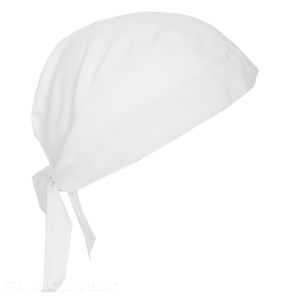Medical cap
Antibacterial and Anti-Stain Medical Cap - Comfortable and Breathable - Creyconfé Palermo Friends
CRY-C60013*042-0 12/06/2024 340
Antibacterial and Breathable Nurse Bandana - Creyconfé Palermo Mandalas - Microfiber 100% polyester
CRY-C60013*145-0 12/06/2024 349
CRY-C60013*037-0 10/05/2024 322
Antibacterial, Water-Repellent, and Anti-Stain Medical Cap - 100% Polyester - Creyconfé Pisa Love
CRY-C49514*2215/037-0 12/06/2024 445
CRY-C49514*2215/026-0 12/06/2024 358
CRY-C60013*006-0 24/05/2024 343
CRY-C60013*015-0 24/05/2024 375
CRY-C60013*005-0 24/05/2024 406
CRY-C60013*048-0 06/05/2024 458
CRY-C60013*039-0 06/05/2024 405
CRY-C60013*029-0 24/05/2024 324
CRY-C49514*2215/048-0 12/06/2024 311
CRY-C60013*002-0 24/05/2024 486
CRY-C60013*008-0 24/05/2024 392
CRY-C60013*136-0 06/05/2024 395
CRY-C60013*066-0 12/06/2024 378
CRY-C60013*125-0 06/05/2024 367
CRY-C60013*047-0 06/05/2024 330
CRY-C60013*000-0 24/05/2024 500
Medical Caps for Healthcare Professionals: Comfort & Safety!
At Placemed, we understand that every detail counts in demanding medical environments. That's why we have carefully selected our range of medical caps, designed to offer both safety and comfort. Each cap in our collection is made from high-quality materials, ensuring optimal protection and impeccable hygiene.
Whether you are operating in the surgery room or providing daily care, our headwear is designed to perfectly fit your professional routine, while allowing you to express your personality with a variety of styles and patterns. Join the many healthcare professionals who already trust our marketplace to combine functionality, comfort, and elegance. Explore our selection now and find the ideal cap that will accompany you in every moment.
Medical Caps in Professional Practices
The medical cap is an important piece of equipment in preventing cross-contamination in medical environments. By covering the hair, it helps maintain a sterile environment, which is essential for the safety of both patients and medical staff. Indeed, far more than just functional accessories, caps are subject to rigorous regulatory standards, ensuring optimal protection against infections. This regulation ensures that each medical cap meets the strictest quality and efficacy requirements, thus reinforcing their essential role in maintaining hospital hygiene practices.
Variety and Specifics of Medical Caps
The range of medical caps offers a remarkable diversity, suited to every specialty and individual preference, ensuring both functionality and compliance with the strict demands of the medical environment.
Surgeon Cap
Specially designed for surgeons, this type of medical headgear offers complete hair coverage and is often made from light and breathable fabrics for maximum comfort during long operations.
OR Cap or Block Cap
Used by all personnel operating in surgical rooms, these caps are essential for maintaining the sterility of the operating environment. They are available in different models to suit all hair styles and personal preferences.
Nurse Cap
Designed for nurses, this model combines style and functionality. It is often chosen for its comfortable design and varied patterns, thus adding a touch of personality within the uniformity of hospital attire.
Dentist Cap
Dentists prefer caps that combine comfort and hygiene while allowing easy identification by patients and staff.
Women's and Men's Caps
Medical caps are also differentiated based on gender preferences, offering designs and cuts that better fit the shape of the head and the volume of hair.
Physician Cap
Generally more sober and professional, the physician's cap often reflects the seriousness and authority of the profession.
Long Hair Cap
This type of headgear is specially designed to comfortably contain long hair, ensuring that nothing protrudes and that all hair is well covered.
Choosing and Customizing Medical Caps
Choosing the right medical cap is not just a matter of complying with hospital standards; it's also a matter of personal comfort and style. The customization of caps allows healthcare professionals to show their uniqueness while respecting strict hygiene rules. Customization options can include various patterns, colors, and even embroidery of names or logos.
When purchasing a medical cap, several factors must be taken into account:
Material
The choice of fabric plays an essential role in the performance of medical headgear. It is imperative that the material is breathable to maintain a comfortable body temperature, easy to maintain for hygiene, and robust enough to withstand multiple washes without degrading.
Comfort
The cap must be snug enough not to slip and spacious enough not to cause headaches. Therefore, it is important that these headgear are designed for a precise fit, ensuring that they stay in place without slipping, while being spacious enough to avoid unnecessary compression that could cause headaches.
Design
The design must be suitable for both professional standards and personal preferences, offering a variety of options to express individuality while maintaining a professional appearance.
Size
Selecting the right size is important to avoid constant adjustments that can disrupt medical procedures. A perfect fit contributes not only to comfort but also to the functionality of the headgear, ensuring effective and continuous protection.
 Francais
Francais 
 Quote
Quote  Cart
Cart 

















